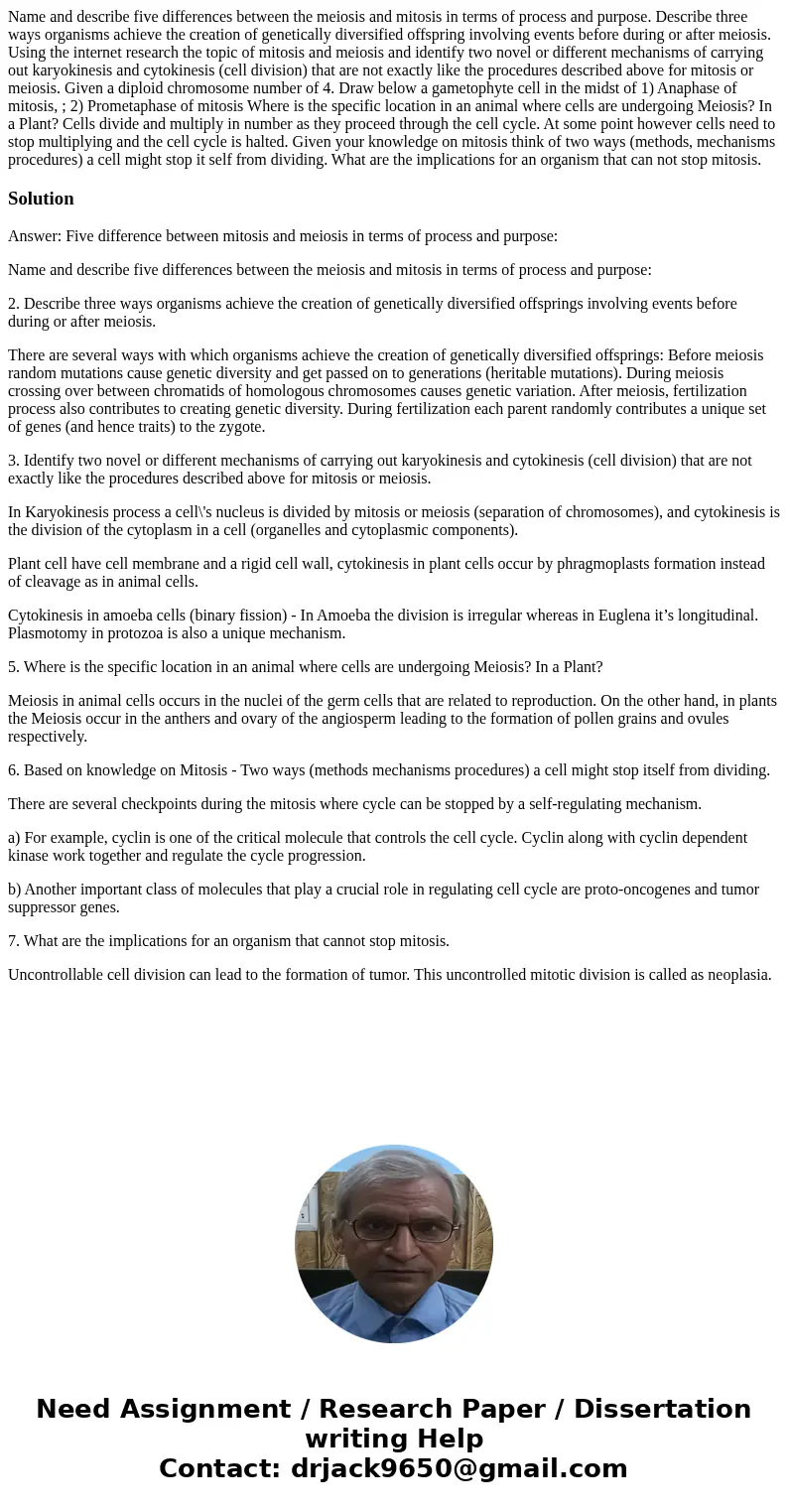Name and describe five differences between the meiosis and m
Solution
Answer: Five difference between mitosis and meiosis in terms of process and purpose:
Name and describe five differences between the meiosis and mitosis in terms of process and purpose:
2. Describe three ways organisms achieve the creation of genetically diversified offsprings involving events before during or after meiosis.
There are several ways with which organisms achieve the creation of genetically diversified offsprings: Before meiosis random mutations cause genetic diversity and get passed on to generations (heritable mutations). During meiosis crossing over between chromatids of homologous chromosomes causes genetic variation. After meiosis, fertilization process also contributes to creating genetic diversity. During fertilization each parent randomly contributes a unique set of genes (and hence traits) to the zygote.
3. Identify two novel or different mechanisms of carrying out karyokinesis and cytokinesis (cell division) that are not exactly like the procedures described above for mitosis or meiosis.
In Karyokinesis process a cell\'s nucleus is divided by mitosis or meiosis (separation of chromosomes), and cytokinesis is the division of the cytoplasm in a cell (organelles and cytoplasmic components).
Plant cell have cell membrane and a rigid cell wall, cytokinesis in plant cells occur by phragmoplasts formation instead of cleavage as in animal cells.
Cytokinesis in amoeba cells (binary fission) - In Amoeba the division is irregular whereas in Euglena it’s longitudinal. Plasmotomy in protozoa is also a unique mechanism.
5. Where is the specific location in an animal where cells are undergoing Meiosis? In a Plant?
Meiosis in animal cells occurs in the nuclei of the germ cells that are related to reproduction. On the other hand, in plants the Meiosis occur in the anthers and ovary of the angiosperm leading to the formation of pollen grains and ovules respectively.
6. Based on knowledge on Mitosis - Two ways (methods mechanisms procedures) a cell might stop itself from dividing.
There are several checkpoints during the mitosis where cycle can be stopped by a self-regulating mechanism.
a) For example, cyclin is one of the critical molecule that controls the cell cycle. Cyclin along with cyclin dependent kinase work together and regulate the cycle progression.
b) Another important class of molecules that play a crucial role in regulating cell cycle are proto-oncogenes and tumor suppressor genes.
7. What are the implications for an organism that cannot stop mitosis.
Uncontrollable cell division can lead to the formation of tumor. This uncontrolled mitotic division is called as neoplasia.

 Homework Sourse
Homework Sourse